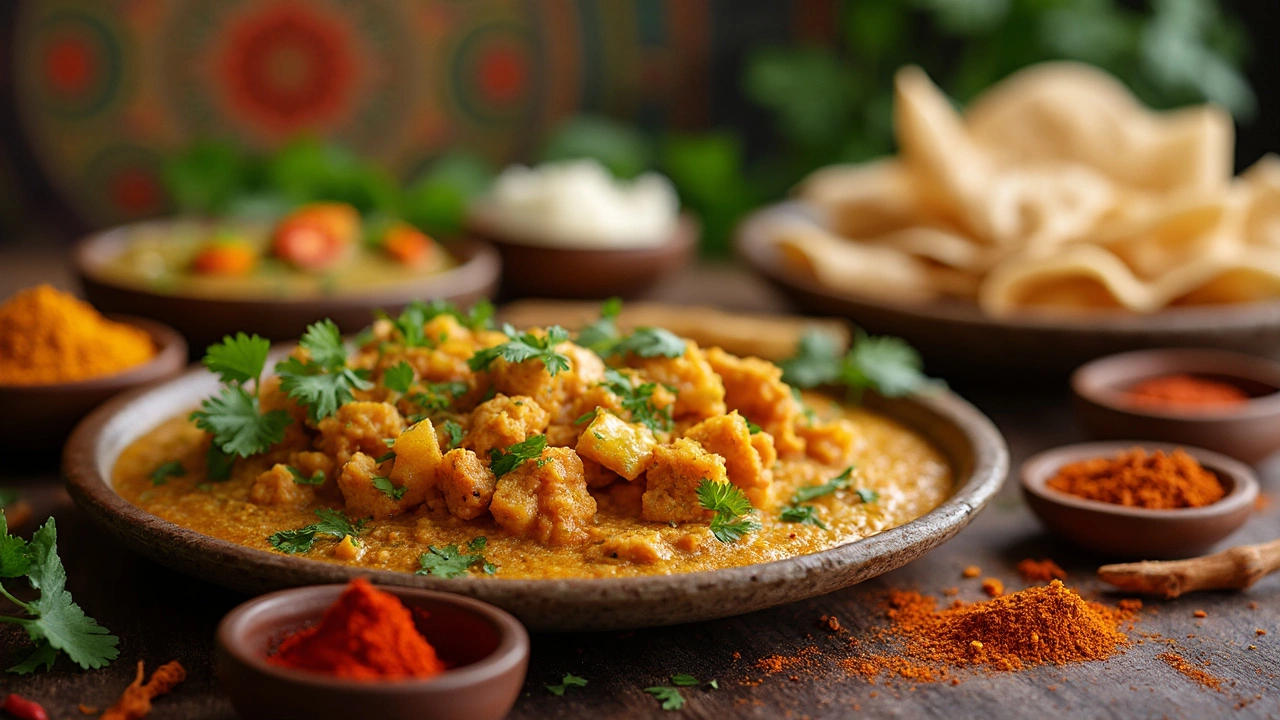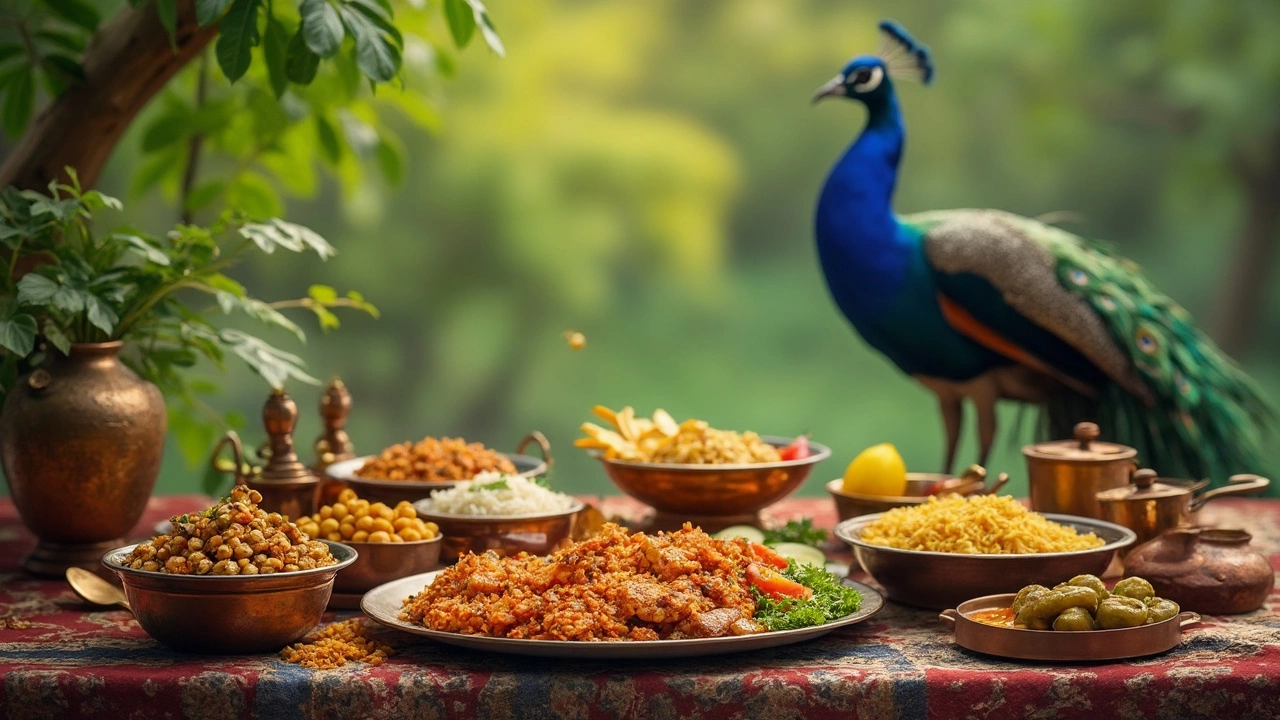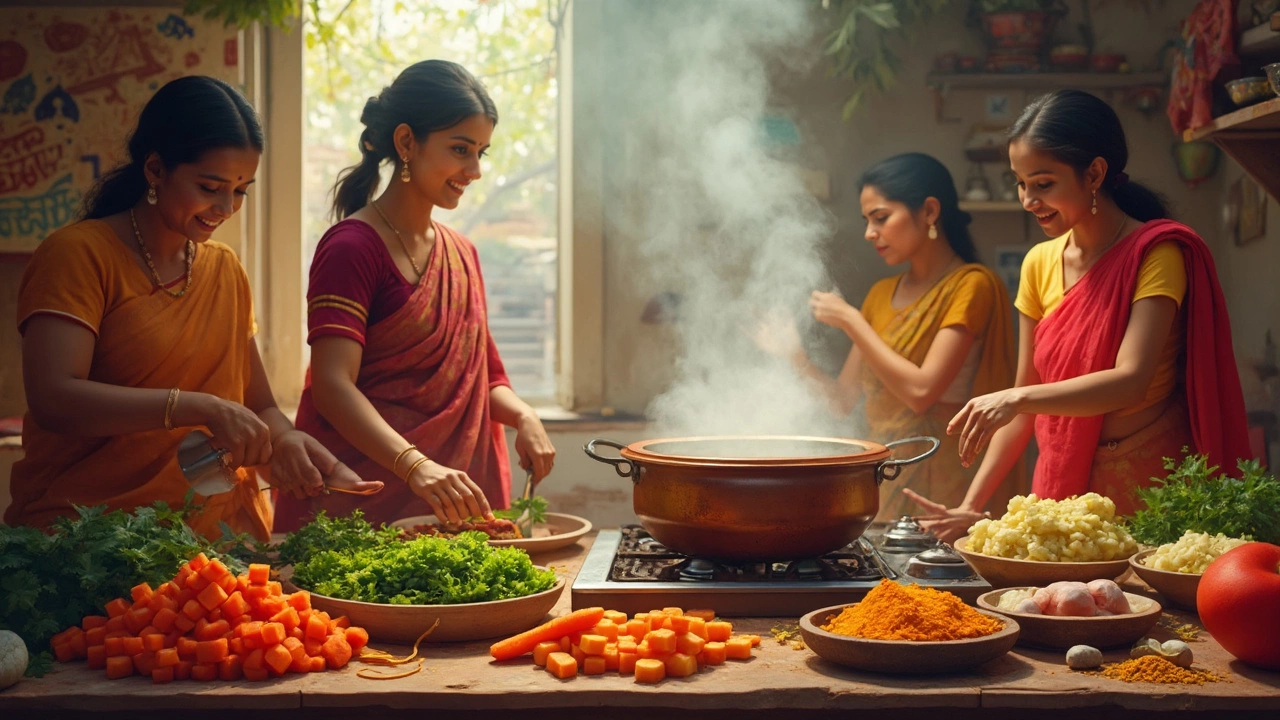When you think of Indian vegetarian food, what comes to mind? Colorful curries, fragrant spices, and maybe a hint of something sizzling in a pan? But beyond the tasty surface, there's a question worth exploring: Is it healthy to dive into this realm of vegetarian goodness?
Right from the start, let's tackle a big one: nutrition. Indian vegetarian dishes revolve around staples like lentils, chickpeas, vegetables, and spices. Take lentils, for example. These tiny powerhouses are packed with protein, fiber, and essential minerals. They fuel you without weighing you down. Imagine swapping a regular meat meal with a hearty lentil curry—just one small step can make a massive difference to your diet.
Then there's the spice element. Spices in Indian cuisine aren't just for heat. Turmeric, ginger, garlic... these are like hidden superheroes in your plate. Turmeric, known for its anti-inflammatory properties, gets its golden glow from curcumin, a compound studied for its health benefits. So, next time you're laying spices into a dish, know that you're doing more than just flavoring your food.
But how do you make sure you're eating Indian vegetarian food the healthy way? It comes down to balance. While those creamy sauces and fried snacks are tempting, moderation is key. Just like any cuisine, Indian food can be both extremely healthy or not, depending on the preparation and ingredients. Sneak in more veggies, opt for grilled over fried, and enjoy the true essence of Indian vegetarian dining.
- Indian Veg Cuisine: A Quick Overview
- Nutritional Benefits of Common Ingredients
- The Power of Spices
- Balancing Flavors and Health
- Tips for a Healthier Indian Vegetarian Diet
Indian Veg Cuisine: A Quick Overview
Indian vegetarian cuisine is a treasure trove of flavors and nutrition. With its roots going back thousands of years, this culinary tradition is deeply intertwined with India's diverse culture and religions. The diet favors vegetables, grains, and legumes, with regional specialties that offer a wide range of health benefits.
India is a melting pot of cuisines with each state having its own unique dishes and styles. From the north, you get hearty dishes like paneer tikka and chole. In the south, expect lighter fare like dosa and sambar. Each region brings something unique to the table, but a common thread is the use of spices and ingredients aimed at health and flavor.
Staples of the Cuisine
Lentils, also known as 'dal', often form the cornerstone of an Indian vegetarian diet. Not only are they protein-rich, but they're also versatile and have been a dietary staple for centuries. Combine them with rice or bread, and you've got a complete meal. Whole grains like quinoa and millets are gaining popularity as well and provide additional nutrients.
According to the Indian Council of Medical Research, "Traditional Indian diets are governed by dietary principles adopted since ancient times, which emphasize the nutritional wisdom of balancing food groups and seasonal availability."
The Magic of Spices
Don't be fooled into thinking Indian cuisine is just about heat. The Indian vegetarian food palette is more complex, incorporating spices with medicinal qualities. Turmeric, cumin, and ginger aren't just for flavor—they have health-boosting properties that have been part of Ayurveda for ages.
Popular Indian Veg Dishes
- Palak Paneer: A spinach and cottage cheese dish loaded with iron and protein.
- Aloo Gobi: A potato and cauliflower curry that's as comforting as it is nutritious.
- Baingan Bharta: Roasted eggplant mashed and spiced, perfect for a low-calorie meal.
This diversity in Indian cuisine not only caters to varied tastes but also provides important nutrients. Whether you’re a lifelong vegetarian or exploring new dietary paths, Indian vegetarian food has something for everyone.
Nutritional Benefits of Common Ingredients
Indian vegetarian dishes are a treasure trove of ingredients that do wonders for health. Let's break down some of the superstar elements that make this cuisine both delicious and beneficial.
Lentils and Legumes: Protein Powerhouses
Lentils, chickpeas, and beans form the backbone of many Indian vegetarian food dishes. They're packed with protein and fiber, making you feel full longer and stabilizing blood sugar levels. According to nutritionist Dr. Aarti Mangurkar, "Lentils are a fantastic substitute for meat. They provide enough protein while being lower in fat and calories."
Spices: More Than Just Flavor
Spices in Indian cuisine are not only for taste. Turmeric, for example, is hailed for its anti-inflammatory and antioxidant properties. And who could forget cumin and coriander? They aid digestion and improve gut health. Imagine your kitchen like a little spice apothecary, ready to tackle inflammation and digestion issues with each sprinkle.
Vegetables: Filling and Nutritious
Vegetables like spinach, cauliflower, and eggplant play an important role too. Spinach is rich in iron, while cauliflower provides vitamin C and fiber. Having a variety of vegetables ensures you're getting a wide range of nutrients essential for overall health. It's like nature's vitamin cabinet.
Whole Grains: Slow Burn Energy
Whole grains such as brown rice and millet are common in Indian dishes and offer complex carbohydrates that give you a slow release of energy throughout the day. They're less processed than white rice, retaining more of the nutrients that fuel you.
Take a look at this simple table that shows the nutritional content of some common ingredients:
| Ingredient | Calories (per 100g) | Protein (g) | Fiber (g) |
|---|---|---|---|
| Lentils | 116 | 9.0 | 7.9 |
| Chickpeas | 164 | 8.9 | 7.6 |
| Spinach | 23 | 2.9 | 2.2 |
| Brown Rice | 123 | 2.7 | 1.8 |
Choosing the right ingredients in vegetarian Indian dishes helps create meals that aren't just tasty but also nourishing and balanced. So the next time you're whipping up a meal, remember these nutritional wonders that your body will thank you for.

The Power of Spices
Spices are what give Indian vegetarian food its soul. They're more than flavor enhancers; they're health-boosting little miracles. Let's dive into some of the stars.
Turmeric: The Golden Spice
Turmeric is practically the poster child for healthy Indian cuisine. It's rich in curcumin, known for its anti-inflammatory and antioxidant effects. People drink turmeric lattes for a reason, right? Cooking with turmeric can help reduce inflammation—a welcome fact for anyone with ongoing aches or arthritis. It's a staple in curries and also a fantastic addition to soups or stews.
Ginger: Zesty and Healing
Next up is ginger. It's not just zingy; it's got a solid reputation for easing nausea and improving digestion. You probably know it's used in teas or sweet treats, but it also brings a spicy warmth to savory dishes. Regular intake of ginger can aid metabolism and is even said to give a little boost of energy.
Chili Peppers: Not Just Heat
Chili peppers bring the fire, but did you know they also help burn calories? Featuring capsaicin, chilis can increase metabolic rate slightly. If you're watching your weight, a bit of chili heat might be your friend. Just remember to balance it; too much can overwhelm your dish—and your taste buds.
More Than Just Flavor
Let's look at a quick snapshot of what typical Indian spices bring to the table:
- Cumin - High in iron, great for boosting metabolism.
- Coriander - Known to balance cholesterol levels.
- Cinnamon - Helps in keeping blood sugar levels stable.
| Spice | Health Benefit |
|---|---|
| Fennel Seeds | Improves digestion |
| Fenugreek | Lowers blood sugar |
| Cloves | Rich in antioxidants |
Indian food uses these spices in a way that's not only about taste but also about health. When you start using these elements in your cooking more consciously, it's like opening a treasure chest. Dive into Indian vegetarian dishes with a new appreciation, knowing they're looking out for your wellbeing, one spice at a time.
Balancing Flavors and Health
When it comes to Indian vegetarian food, striking a balance between taste and health can feel like walking a tightrope. But guess what? It doesn't have to be that way. By understanding the components of your meal, you can indulge in the taste while keeping things wholesome.
Opting for Healthy Cooking Techniques
The method of cooking plays a huge role in determining the health quotient of your meal. Steaming, grilling, and sautéing are a few techniques that preserve the nutrients better than deep frying. Think about grilling those spiced paneer skewers or steaming veggies for that rich curry base—easy swaps but with a significant health boost.
Using the Right Ingredients
Another way to ace this balance is by choosing the right ingredients. Whole grains like brown rice and millet can replace the polished white rice, boosting the fiber content. Fresh veggies and pulses should dominate your plate. Adding more greens like spinach or kale brings in essential vitamins and minerals too.
Spicing it Up the Healthy Way
Spices not only add flavor but can enhance health. For instance, turmeric and ginger have anti-inflammatory properties, and they can be your go-to spices for almost any dish. They're like nature's way of jazzing up your food and looking out for your health all in one go.
Watch Out for Portion Control
Let's chat portion sizes. Overeating even healthy food can negate its benefits. Learning to gauge the right amount, sometimes with the help of measuring cups or simply listening to your body, can help keep everything in check. Remember, it’s about enjoying your meal without going overboard.
| Cooking Method | Health Benefit |
|---|---|
| Grilling | Preserves nutrient content |
| Steaming | Keeps veggies' natural flavor intact |
| Boiling | Eliminates excess fats |
Balancing flavors and health in Indian vegetarian dishes doesn't mean sacrificing your taste buds. It's about making small, intentional adjustments to enjoy the full spectrum of flavors with a heart-healthy twist!

Tips for a Healthier Indian Vegetarian Diet
Eating Indian vegetarian food can be a brilliant way to enjoy both taste and health. However, to make sure you're getting the most out of it, there are a few tricks to keep in mind.
1. Use Fresh Ingredients
First things first, always go for fresh produce. Fresh vegetables and legumes are packed with nutrients that are often lost in canned or processed options. Shopping weekly at your local market ensures that your meals burst with flavor and health benefits.
2. Limit Cream and Butter
Creamy sauces in dishes like paneer makhani can be irresistible, but overdoing it with cream or butter can add unnecessary calories and fats. Instead, use yogurt or coconut milk to create that creamy texture without the heaviness.
3. Embrace Spices
Spices are your best friend in Indian cuisine. Instead of reaching for salt, spice up your meal with cumin, coriander, turmeric, or ginger. These not only enhance flavor but also bring a myriad of health benefits.
4. Opt for Whole Grains
Switch up white rice and refined flour with whole grains like brown rice, quinoa, or whole wheat. They keep you fuller for longer and provide a boost of fiber, keeping your digestive system happy.
5. Control Portion Sizes
Sometimes it's easy to overeat because everything tastes so amazing. Try to be mindful of serving sizes by using smaller plates or bowls. This helps you to enjoy every bite without feeling stuffed.
Extra Tip: Meal Prep Mindfully
If possible, spend part of your weekend prepping meals for the week. Chop veggies, marinate tofu, and cook lentils in advance. This way, you have less temptation to reach for less healthy options when life gets busy.
Here's a quick comparison table to visualize the healthier choices:
| Traditional Option | Healthier Swap |
|---|---|
| White Rice | Brown Rice/Quinoa |
| Refined Flour | Whole Wheat |
| Cream Sauces | Yogurt/Coconut Milk Sauces |
With these tips, you can enjoy the richness of Indian vegetarian dishes while keeping things on the healthier side. Balance is key, and with a few tweaks, your meals can satisfy both your cravings and nutritional needs.

